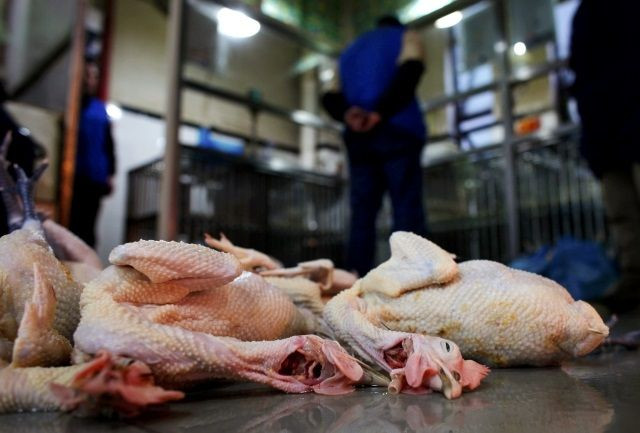Chinese Bird Flu Came From Chickens: Scientists Confirm Source of H7N9 Influenza Virus

The H7N9 influenza virus, a new strain of bird flu that has swept through China (and more recently Taiwan) over the last few weeks, has infected at least 109 people and killed 23 since it was first detected in March.
Now, Chinese scientists have confirmed that this strain of bird of bird flu has been transmitted to humans from chickens, according to a study published in Lancet on Thursday. The study's authors reiterated previous statements of Chinese government officials that there is no evidence that the virus can be transmitted from human to human.
Public health officials in China and across the globe have been scrambling to determine how best to contain the spread of the disease, particularly after the World Health Organization warned last Wednesday that this strain may be the "most lethal" version of bird flu yet.
The research team, led by Kwok-Yung Yuen of the University of Hong Kong, looked closely at four H7N9 patients who were known to have been exposed to poultry, either through work or at a poultry market. In order to determine whether or not the virus originated in poultry, the scientists went out to six markets in Zhejiang, a coastal province of Shanghai, which the patients were likely to have visited.
The team gathered saliva swabs from 86 birds: 57 ducks, 20 chickens, five pigeons, and four quails. After analyzing the swabs in a lab (by inculcating embryonated chicken eggs with the samples), they determined that four chickens and two pigeons tested positive for H7N9; none of the ducks or quails tested positive.
Then, the scientists isolated one sample of the H7N9 virus from a human patient and one sample from a chicken, and compared the genetic makeup of both.
The results indicate that it is the same exact virus - meaning it almost definitely spread from chicken to human.
The authors of the study suggest the following additional steps be taken to prevent further spread of the disease:
Aggressive intervention to block further animal-to-person transmission in live poultry markets, as has previously been done in Hong Kong, should be considered. Temporary closure of live bird markets and comprehensive programmes of surveillance, culling, improved biosecurity, segregation of different poultry species, and possibly vaccination programmes to control H7N9 virus infection in poultry seem necessary to halt evolution of the virus into a pandemic agent.
If you are anywhere near China, you may want to avoid eating chicken or being around raw poultry entirely.
On the other hand, you probably don't need to worry about catching the virus from being on the subway. The research team went out and tested over 300 people who had close contact with the four patients, and none of them showed any sign of infection. This, it seems to indicate, means the virus is not able to spread from human to human.
We're not out of the deep end yet, though. Viruses mutate all the time, and H7N9 has already acquired a few genetic mutations that make it more able to infect mammals.
Further adaptation of the virus could lead to infections with less severe symptoms and more efficient person-to-person transmission," the authors of the study wrote.



























